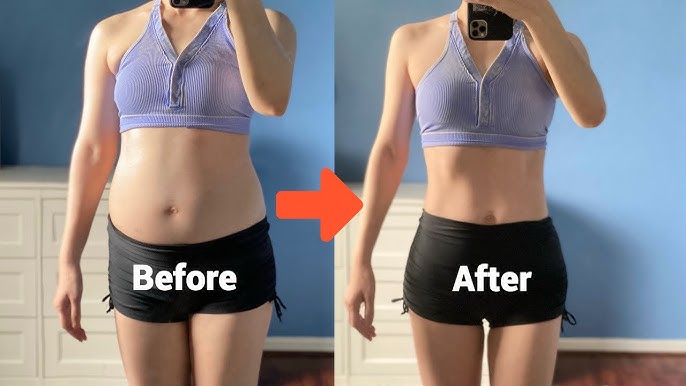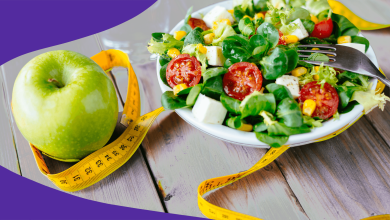How to Lose Weight Fast: Should You Focus on Diet or Exercise?

When it comes to shedding pounds quickly, one of the most common questions people ask is: Should I focus more on diet or exercise? It’s a fair question — after all, both play crucial roles in achieving and maintaining a healthy weight. Yet, many experts agree that the balance between the two might depend on your goals, lifestyle, and even your biology.
Let’s break down what science says about diet vs. exercise for fast weight loss, how they interact, and how you can combine both effectively to achieve lasting results.
1. The Basics of Weight Loss: Understanding Calories
At its core, weight loss comes down to calorie balance — the relationship between how many calories you consume and how many you burn.
- Calories In: This refers to the food and drinks you consume daily.
- Calories Out: This includes your resting metabolism (the energy your body uses to function) plus any additional calories burned through movement or exercise.
To lose weight, you must create a calorie deficit, meaning you consume fewer calories than your body burns. However, how you create that deficit — through diet, exercise, or a mix of both — is where the debate begins.
2. The Case for Diet: Why Nutrition Matters Most
Numerous studies suggest that diet has a more significant impact on weight loss than exercise alone. The reason is simple: it’s much easier to not eat 500 calories than to burn 500 calories through physical activity.
a. Cutting Calories Is More Efficient
Let’s put this into perspective. A single slice of pizza can have around 300 calories, while running for 30 minutes might burn roughly the same amount — depending on your weight and pace. So, skipping that extra slice can have the same effect as a long run.
Research from the Journal of the Academy of Nutrition and Dietetics found that individuals who reduced calorie intake through dietary changes lost more weight than those who only increased exercise.
b. The Quality of Food Matters
It’s not just about cutting calories — what you eat matters. Diets rich in whole foods — lean proteins, fruits, vegetables, whole grains, and healthy fats — help you stay full longer, stabilize blood sugar, and support fat loss.
Highly processed foods, on the other hand, often contain added sugars, refined carbohydrates, and unhealthy fats that can lead to overeating and sluggish metabolism.
c. Protein: The Secret Weapon for Fast Weight Loss
Protein plays a powerful role in weight management. It helps preserve lean muscle mass, boosts metabolism, and promotes satiety (the feeling of fullness).
Try including foods like:
- Chicken breast, turkey, or fish
- Greek yogurt or cottage cheese
- Eggs
- Legumes and tofu
According to a 2015 study in the American Journal of Clinical Nutrition, people who increased protein intake lost more fat while retaining muscle compared to those on lower-protein diets.
d. The Importance of Portion Control
Even healthy foods can cause weight gain if eaten in excess. Practicing portion control — such as using smaller plates or measuring servings — can make a significant difference in maintaining a calorie deficit.
3. The Role of Exercise: Why It Still Matters
While diet may drive the bulk of weight loss, exercise is essential for overall health, metabolism, and maintaining results long-term.
a. Exercise Burns Calories — and Boosts Metabolism
Physical activity increases your total energy expenditure, helping you burn more calories throughout the day. Beyond that, regular exercise boosts your resting metabolic rate (RMR) — meaning your body burns more calories even when you’re not active.
b. Building Muscle: The Fat-Burning Advantage
Strength training, in particular, helps you build muscle, which is metabolically active tissue. The more muscle you have, the more calories your body burns at rest.
A study in the Journal of Applied Physiology found that combining resistance training with a calorie-restricted diet resulted in greater fat loss and muscle retention compared to dieting alone.
c. Cardio for Calorie Burn and Heart Health
Cardiovascular exercises like running, cycling, swimming, or even brisk walking help improve endurance, heart health, and overall fitness.
High-intensity interval training (HIIT), which alternates short bursts of intense activity with recovery periods, is especially effective for burning fat quickly and efficiently.
d. Exercise Reduces Stress and Improves Sleep
Stress and lack of sleep can derail your weight loss efforts by increasing cortisol — a hormone linked to fat storage, especially around the abdomen. Regular physical activity helps regulate hormones, reduce stress, and promote deeper sleep.
4. Diet vs. Exercise: What the Science Says
So, if both are important, which one should you prioritize for fast weight loss?
a. Studies Favor Diet for Initial Weight Loss
Most research agrees that diet changes lead to faster and more significant short-term weight loss. A review published in the Journal of Strength and Conditioning Research found that participants who focused primarily on diet lost more weight within 12 weeks compared to those who focused on exercise alone.
b. Exercise Helps Maintain Weight Loss
However, when it comes to keeping the weight off, exercise becomes essential. People who maintain consistent physical activity are more successful at preventing weight regain.
The National Weight Control Registry — which tracks over 10,000 people who have maintained significant weight loss — found that 90% exercise regularly as part of their routine.
c. Combining Both Is the Best Long-Term Strategy
The best results come from combining a healthy diet and regular exercise. Diet creates the calorie deficit needed for weight loss, while exercise helps preserve lean muscle, boost metabolism, and improve overall health.
5. How to Combine Diet and Exercise for Maximum Results
If you want to lose weight fast — and keep it off — here’s how to use both tools effectively.
a. Step 1: Create a Calorie Deficit Through Smart Eating
Start by calculating your daily calorie needs using an online calorie calculator. Then aim to eat 500–700 calories less than your maintenance level for safe, sustainable weight loss (about 1–2 pounds per week).
Focus on:
- Whole, unprocessed foods
- Protein-rich meals
- Fiber-filled vegetables and fruits
- Healthy fats from sources like avocados, nuts, and olive oil
Avoid:
- Sugary drinks and desserts
- Refined carbs (white bread, pastries)
- Processed snacks high in sodium and trans fats
b. Step 2: Move Your Body Daily
You don’t have to spend hours in the gym — consistency is key. Combine cardio and strength training for best results.
Sample weekly plan:
- 3–4 days of strength training (target all major muscle groups)
- 2–3 days of cardio (running, cycling, swimming, or HIIT)
- 1 day of active rest (walking, yoga, or stretching)
c. Step 3: Track Your Progress
Monitoring your habits keeps you accountable. Use tools like:
- Food tracking apps (MyFitnessPal, Cronometer)
- Fitness watches or step counters
- Progress photos or measurements
d. Step 4: Don’t Neglect Recovery
Sleep and recovery are just as important as diet and exercise. Aim for 7–9 hours of sleep per night and allow your muscles to rest between workouts.
e. Step 5: Stay Consistent and Patient
Rapid weight loss might sound appealing, but sustainable progress takes time. Aim for steady results rather than extreme measures that can lead to burnout or muscle loss.
6. Common Mistakes to Avoid
When trying to lose weight fast, many people make errors that can sabotage progress.
a. Over-Restricting Calories
Cutting too many calories can slow metabolism, cause fatigue, and increase cravings — making it harder to stick with your plan.
b. Over-Exercising Without Proper Nutrition
Excessive exercise without adequate fuel can lead to injuries, burnout, and even hormonal imbalances.
c. Ignoring Protein and Strength Training
Skipping resistance workouts or eating too little protein can cause muscle loss — leading to a slower metabolism and less toned appearance.
d. Expecting Instant Results
Sustainable fat loss takes time. Unrealistic expectations can lead to frustration and giving up too soon.
7. The Psychological Side of Weight Loss
Weight loss isn’t just physical — it’s deeply psychological. Mindset, motivation, and self-discipline play huge roles in success.
a. Set Realistic Goals
Break your larger weight loss target into smaller, manageable milestones. Celebrate progress — even if it’s just a few pounds lost or sticking to your workout schedule.
b. Practice Mindful Eating
Pay attention to hunger cues, eat slowly, and avoid distractions during meals. This helps prevent overeating and promotes a healthier relationship with food.
c. Stay Consistent, Not Perfect
There will be slip-ups — and that’s okay. What matters most is consistency over perfection. Don’t let one bad meal or missed workout derail your progress.
8. The Verdict: Diet or Exercise — Which Is More Important?
If your goal is to lose weight fast, diet should be your primary focus. However, if your goal is to keep it off and improve your health, exercise must be part of your long-term strategy.
The best results come from a combination of both:
- Use diet to create a calorie deficit
- Use exercise to boost metabolism, build muscle, and maintain results
Ultimately, successful weight loss is not about choosing between diet or exercise — it’s about finding a balance that fits your lifestyle, preferences, and long-term goals.
Final Thoughts
Losing weight fast doesn’t mean starving yourself or spending hours at the gym. The key is to focus on smart nutrition, consistent movement, and healthy habits that support your body’s natural ability to burn fat.




